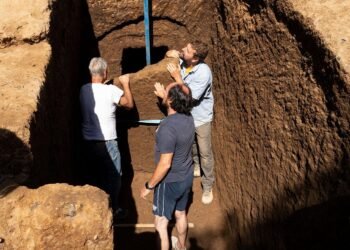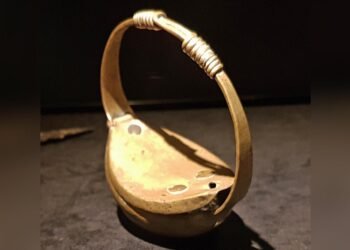Researchers have recently gained new insights into the mysterious sinking of an Irish merchant ship, the Providentz, which went down off the coast of Norway in 1721.
The Providentz, owned by Joseph and Walter Lavit, influential figures from Cork, Ireland, was a merchant vessel laden with butter, corn, grain, and malt. It set sail from Cork on September 22, 1721, destined for Arendal, Norway. On October 16, the ship arrived near Mandal, in southern Norway, where it waited for favorable weather to complete its journey. After nearly two weeks, on the morning of November 9, a local pilot boarded the Providentz to help guide it safely out to sea, a common practice in the region.
However, the ship’s journey quickly ended in disaster when it ran aground on islets and reefs near Mandal. A breach in the hull caused the ship to sink rapidly, but fortunately, the crew escaped unharmed. The sinking sparked significant debate at the time, with differing accounts from the crew and the pilot about the cause of the wreck.
A court trial later that month sought to determine responsibility for the shipwreck. The pilot, who did not attend the hearing in person but submitted a letter, blamed the crew, particularly the first mate, accusing them of being drunk during the incident and thus impairing their ability to navigate. The crew, however, refuted this claim, arguing that the pilot had made a serious navigational error by confusing starboard (right) with port (left), leading the ship into dangerous waters.
Marine archaeologist Jørgen Johannessen of the Norwegian Maritime Museum, who was involved in the recent investigations, told Newsweek that both factors likely contributed to the sinking. “Although some crew members may have been drunk, as the pilot claimed, it is likely that his navigational error overshadowed this issue. It was very possibly the main factor responsible for the ship’s sinking,” Johannessen said.
The wreck of the Providentz remained undiscovered for centuries until members of the Mandal Dive Club located its remains in December 2020. “The local divers had been looking for this wreck for more than 40 years,” Johannessen noted. Upon discovering the wreck, Johannessen and his team conducted initial research to recover vulnerable objects and assess the ship’s construction. They identified the wreck as the Providentz by finding two clay pipes stamped with “Cork,” confirming its Irish origin.
According to Johannessen, the vessel was built in the Dutch tradition, as evidenced by the extensive use of iron rivets and nails in the hull. Dendrochronological analysis of wood samples from the ship revealed that it was likely built around the year 1700 using oak from northern Germany. “We have sent more dendrosamples, so maybe there are some new surprises for us,” Johannessen added.
Sarah Fawsitt, an archaeologist who has studied the ship, emphasized its importance due to the rarity of surveys of Irish cargo ships from this period. The Lavit family, who owned the ship, were key political and financial figures in Cork, with both Joseph and Walter Lavit having served as mayors. Large areas of Cork are named after them, and their involvement in trade with Norway reflects a broader network of commercial connections in Western Europe during the early 18th century.























